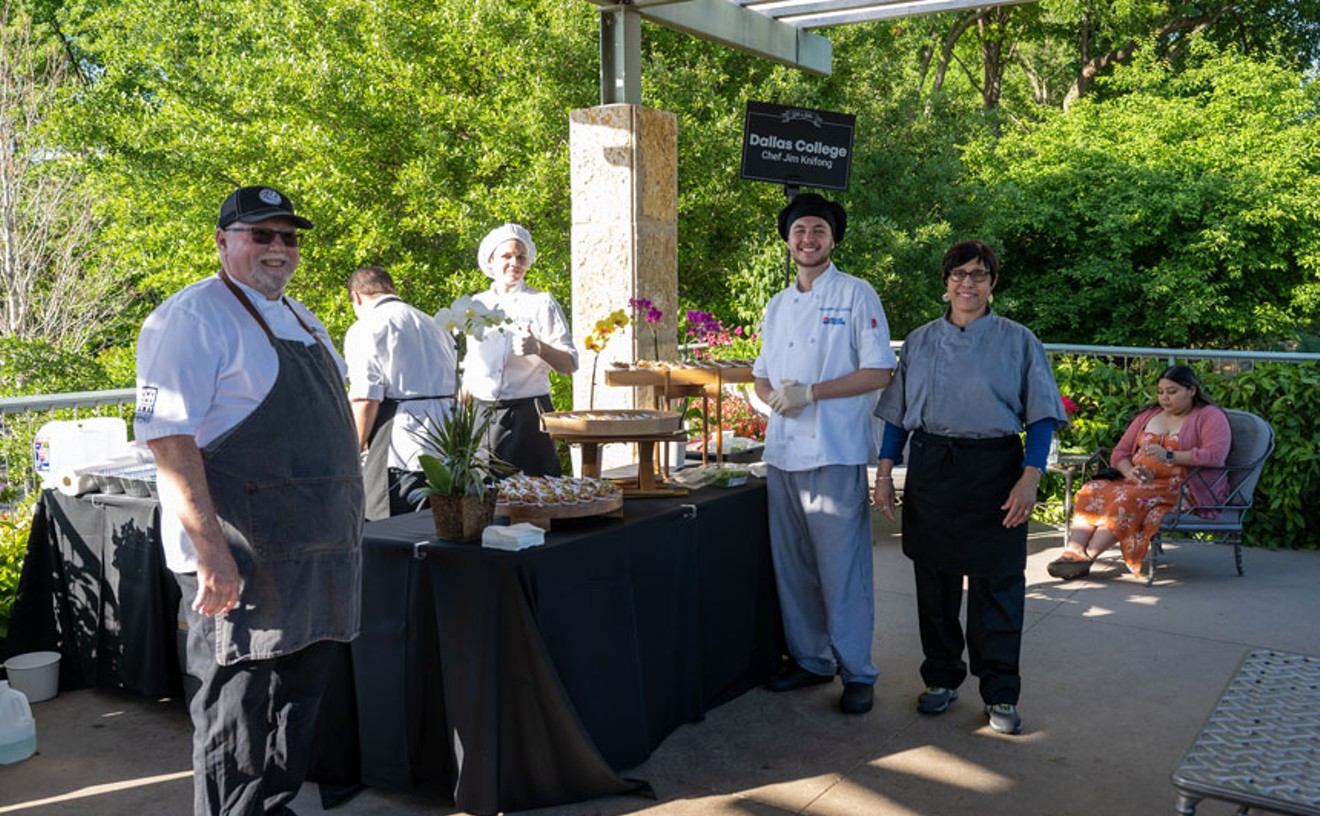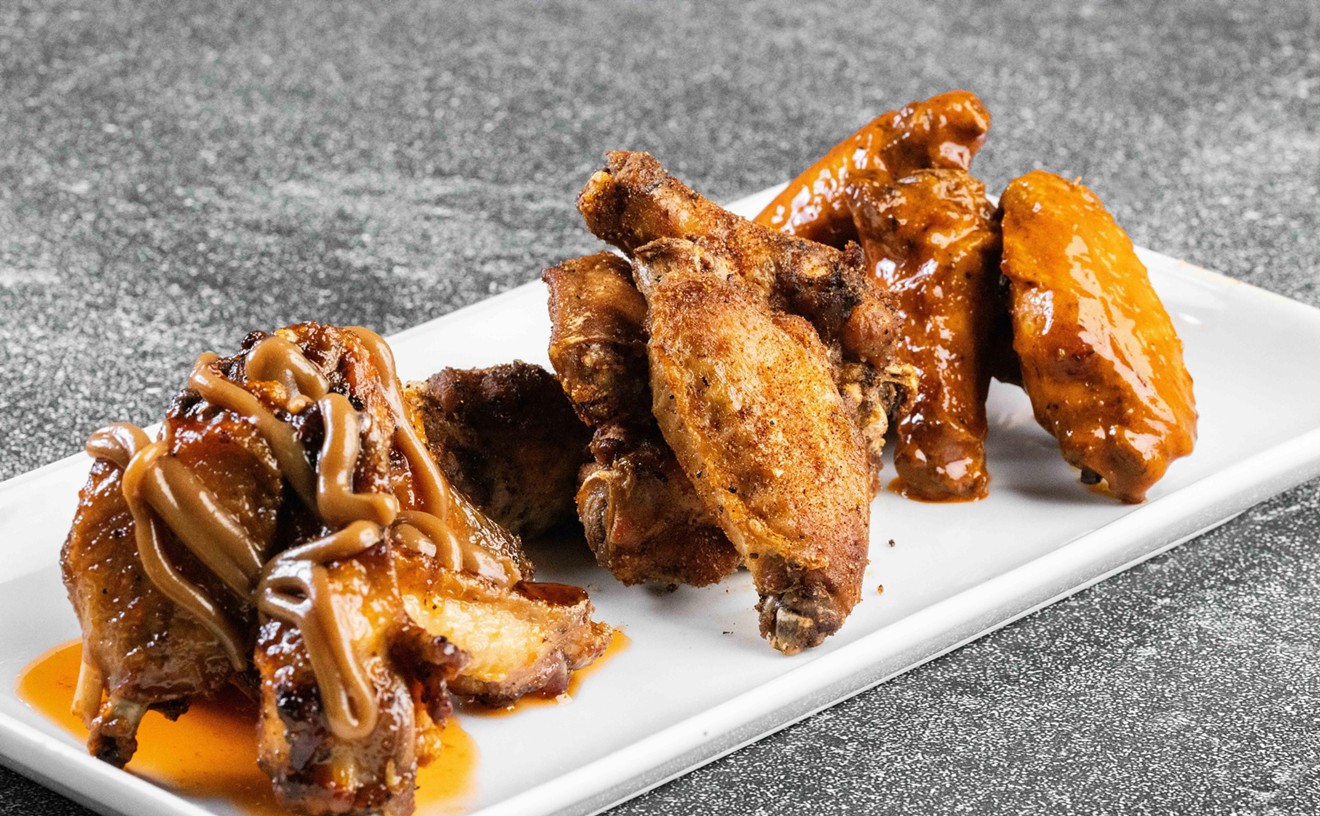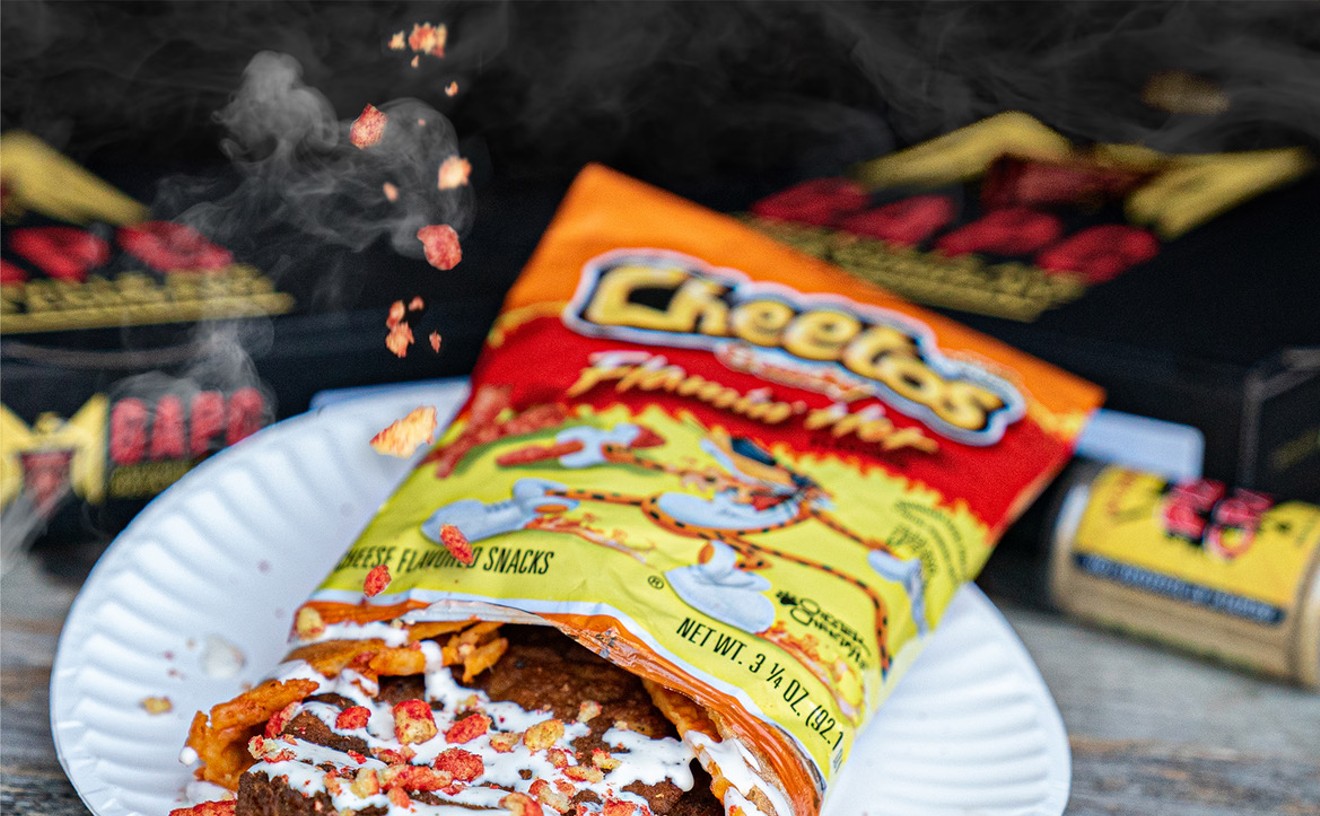Not that Kenichi, the Austin import stocked with contemporary Japanese cuisine, is as gaudy as all that. Its color-shifting luminance is limited to a sort of cubist jellyfish chandelier near the bar with box-like bodies that change color above long, silvery fiber-optic tentacles with bright white light tips for stingers.
Noise swells with near Nove/N9NE potency. There's the requisite music with constantly repeating two-note bass lines propping up a two-chord oscillation with a little drum kit swish. Then someone screams. The sound system decibels increase. The clinking, clacking, cackling and yakking rise in unison. The noise is such that the servers seemingly become victims of Tourette's syndrome, what with all of the shu, sansho, shiitake and shoyu on the menu. It's hard to hear when they tell you that the ishiyaki, a hot rock at 1,000 degrees, comes with a trio of dipping substances: wasabi ponzu sauce, smoked paprika sea salt and pink peppercorn sesame.
The rock is round and black and sits in a bowl and smells of burnt linoleum. It has a life of 10 minutes. (This much we could hear.) The flesh and fungi poised for cauterization are sublime (dip them in the wasabi ponzu sauce first, to keep them from sticking to the stone). There are strips of Kobe beef, bright angry red bulging with veins and capillaries of fat; a pair of thick scallops; overlapping sheets of escolar (a tropical deep sea snake mackerel); and shiitake caps. Slap some on the stone, 10 seconds per side. The beef is lacy and complex. Escolar behaves Kobe-like, fraying into buttery richness between your cheeks. Our 10 minutes run out, and we put in for another rock.
Marinated in sake and soy, the baby octopus looks like little knots of rusted and frayed cable. These knots rest against the bright green mint leaves with an orchid for punctuation. It's tender and more chewable than the hard rubbery crunch these things so often manifest.
Sushi, a food that has so thoroughly shed its exotica it seems bored by its own ubiquity, manages to pull off a series of satiny textures and lush flavors. Horse mackerel (similar to Spanish mackerel) with chopped scallions and a little wasabi separates into silvery gray strands of marine ripeness. The escolar (often tagged with a "white tuna" misnomer) is as creamy and sultry on rice as it is kissing the 1,000-degree rock. Uni is gently firm and sweats an almond essence. Yet there is one disconcerting element here: The sushi is barely cool.
It should steal a little chill from the décor, which comes off bank-ish with all of its metal, glass and walls with long, slinky draperies washed in bluish gray. But there are a few earthy things to tamp it down so you don't feel like you're nibbling tuna belly while tucked under a gray flannel suit lapel. The tables are wood. So are the chairs and barstools, though here the wood is painted black. Green grasses sprout like hair transplant plugs from a divider in the sushi bar. The miso soup (deliciously rich) steams from a wooden bowl with deep rich grain.
Executive chef Bodhi Durant, who made his way to Dallas from the Kenichi in Aspen after spending 15 years amongst the slopes and immoderate real estate parcels (he says he was just plain tired of the place), says the Victory Park edition is the flagship Kenichi. More Kenichis will follow in second-tier cities. Where, he will not say.
What he does say is that Kenichi is devoted to prying open palates, tickling them with the unexpected, twisting and turning and otherwise inverting Japanese flavors and textures into a Kenichi dialect. Those devotions include yukari-rubbed lamb chops, a dish that is difficult to understand in a single conversation. Yukari is Japanese mint that really isn't mint. "Strange," says Durant. "When I first tasted it, I didn't know what to make of it. I couldn't describe it."
I couldn't either. I thought the meat was flawed. The herb made the lamb taste like packaging. This flavor must grow on you. Plus, the lamb, ordered medium rare, was overcooked into dull gray. Yet it is intriguing nonetheless. It's strewn with a lusty, brightly colorful (hot pinkish lavender, green) ginger flower edamame relish—soy beans and pickled pistils from the ginger flower.
The lean and chewy five-spice sika venison in shoyu-gari sauce (soy pickled ginger) also was overcooked, and its innuendoes of sweet, expressed in cinnamon and clove, were just shy of overbearing. There must be a subtler way to tease out venison raciness, especially since the tempura-fried kabocha "galettes" are in desperate need of a savory foil. These are dastardly rich things with hints of unctuous sweetness. The kobacha is a Japanese pumpkin, similar to butternut squash. It's baked, peeled, pureed and blended with butter and cream—lots of it—before the mixture is then rolled into balls and frozen. The frigid kobacha balls are then coated and fried to order. When they come out they look like horse apples, and they mush up in the mouth and melt. You get this urge to set them aside for dessert. Durant says he just may do that.
Kenichi has a salmon-skin salad that is smoky and sensuous. It also has a lengthy sake list that runs both hot and cold. We chose the cold Devil's Mask, with a clean, crisp attack and a lingering dry finish. Though this was one of the cheapest sakes on the menu, don't be afraid to splurge. Premium sakes do not cause hangovers.
Kenichi has a crispy pekin duck leg confit that is exactly how you would expect it or maybe wish it to be: crispy rich skin, and tender and moist meat that practically shivers itself off the bones.
Kenichi has near-perfect little dim sum purses with rock shrimp, ono, sea bass, shiitake and a little kick that could be wasabi but may be a Texas chili pepper. These can be dipped in hot mustard, cilantro and oyster sauces.
Finally, Kenichi has a service staff that knows the menu near-cold and they repeat every detail—ambient noise permitting—before submitting the check. Still they often come off sullen and terse—part of the hip pose no doubt.
But what we liked best—even more than the sushi, even more than the hot rock at 1,000 degrees and the salmon skin salad that, come to think of it, smelled a lot like great sex—was the ono, citrus-marinated and pan-seared rare. It's sweet, delicate and white on a plate that chatters with different flavors and colors: bright green Chinese broccoli, deep purple Peruvian potatoes, rusty slivers of crispy sweet potato. Finish off with mato-san's hot balls or tofu beignets with honeycomb, kafir lime salt and a scoop of vanilla bean gelato that would be a perfect candidate for a kabocha "galette" ball merger.
The Victory Park noise and glare and scrubbed noir glam infects every dining experience in this trough of Dallas glitter. Only it's less so at Kenichi—slightly less so. 2400 Victory Park Lane, 214-871-8883. Open 5:30 p.m.-10 p.m. Monday-Thursday, 5:30 p.m.-11 p.m. Friday-Sunday. $$$-$$$$.










